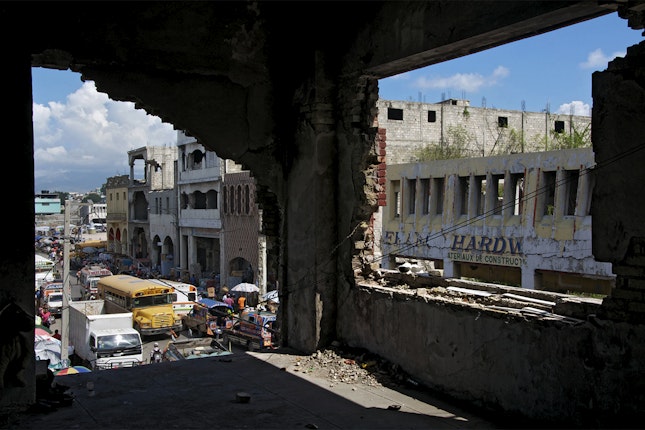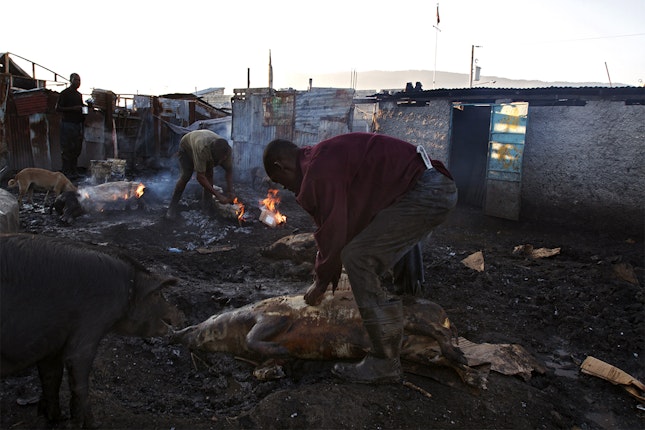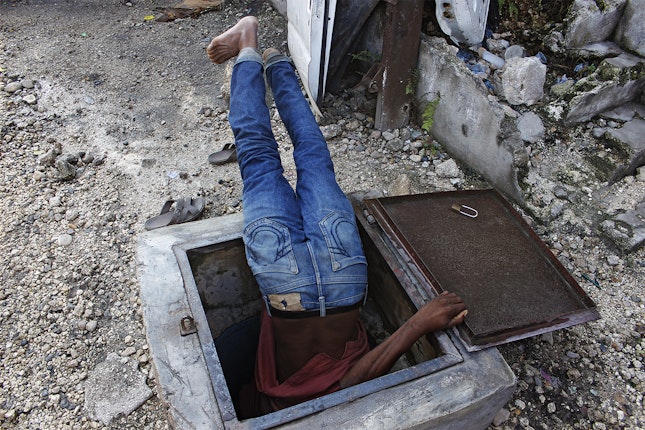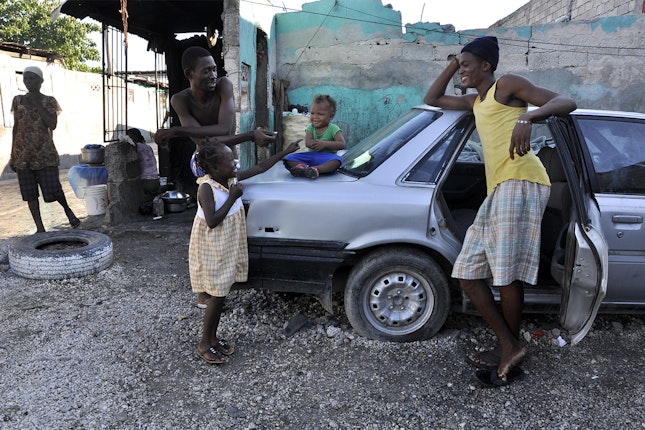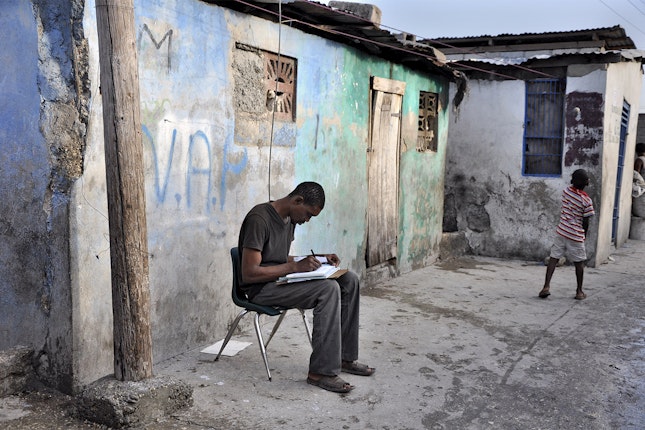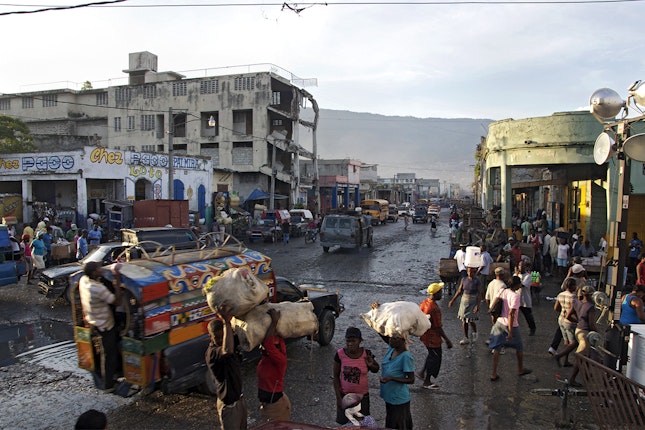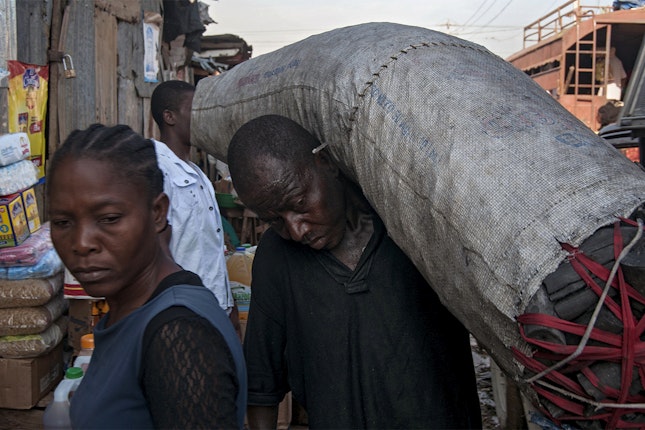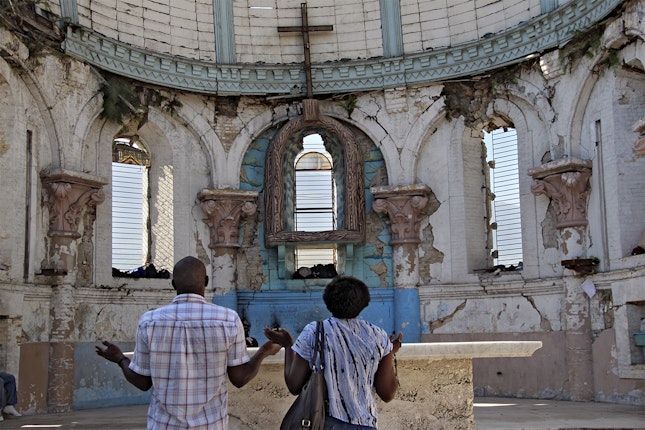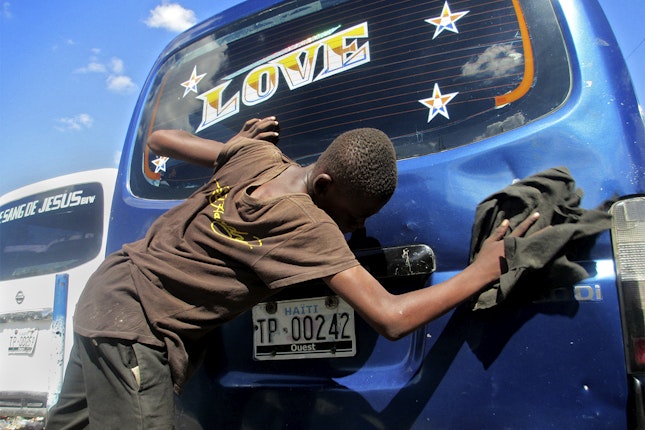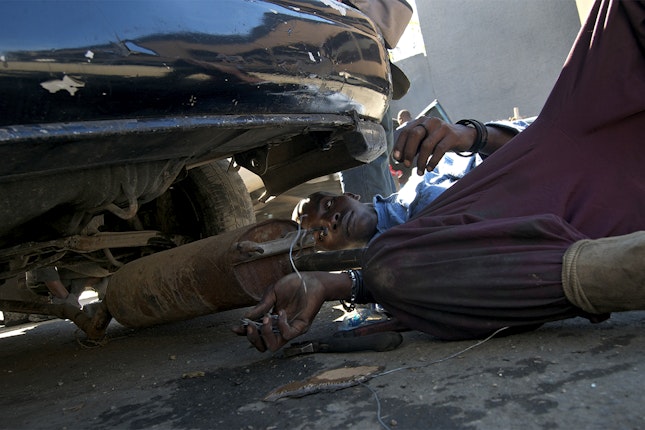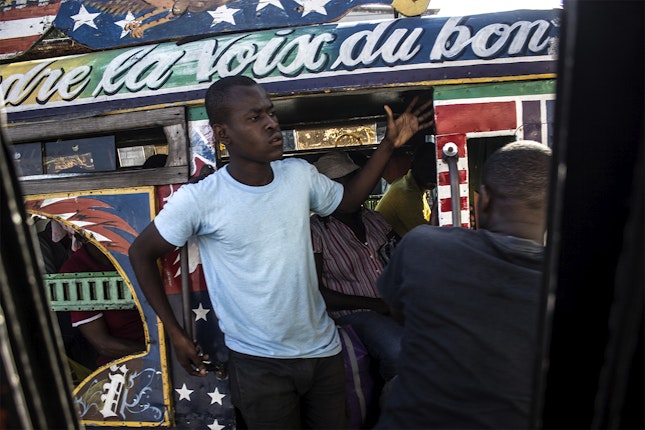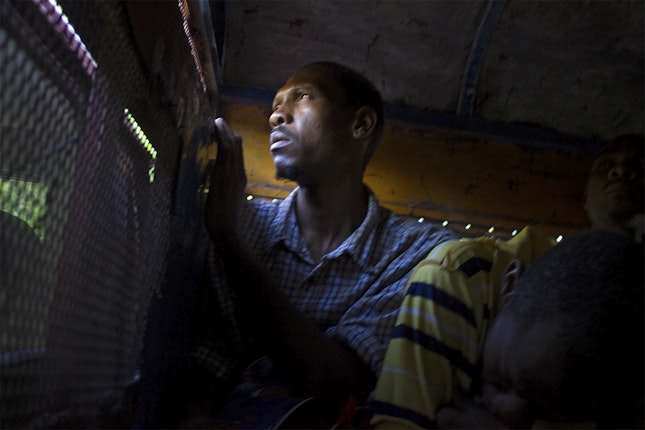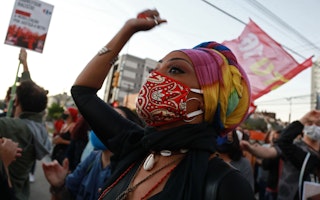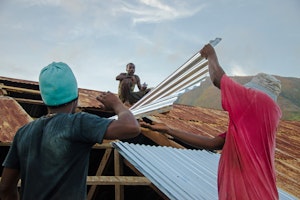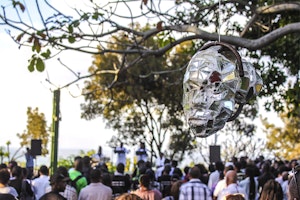Young Photographers Bring Post-Earthquake Haiti into Focus
By Maude Malengrez
Grand Rue is a major thoroughfare running through downtown Port-au-Prince. “It’s a long one,” says Gael Turine, and as he describes it, “very chaotic.”
It was once the main commercial avenue of the old city, and although Port-au-Prince’s center has shifted, Grand Rue remained, until recently, a vibrant commercial artery with shops, street vendors, artisans, and businesses. Also among this bustle of activity is the epicenter of the city’s underground arts scene, where one can find large-scale sculpture created from scrap metal, cast-off clothes, car parts, and human skulls. But the earthquake that struck Haiti five years ago dealt a serious blow to the avenue.
For Turine, a Brussels-based photographer who conducted a series of photography workshops for young Haitians organized by the Fondation Connaissance et Liberté (FOKAL), the Open Society foundation in Haiti, the Grand Rue provided the perfect place for his students to hone their skills.
The photos they shot became a book, Grand’ Rue, designed by Chiquinquira Garcia and published by the foundation. “Frankly speaking, considering they’re students, I think they did quite a good job,” says Turine, adding that he thinks some of them will go on to become professional photographers. For this reason, Turine taught the students not just how to take a picture, but “editing, sequencing, presentation of the work, how to write a note of introduction, and how to make a budget,” he says.
Turine believes the fact that this week marks the fifth anniversary of the earthquake makes Grand’ Rue all the more powerful as a documentary photography project. “Everybody needs to consider the situation,” he says. “Some of these students come from point zero. Getting a book published in this situation is something huge.”
Maude Malengrez is the media program coordinator at Fondation Connaissance et Liberte.
